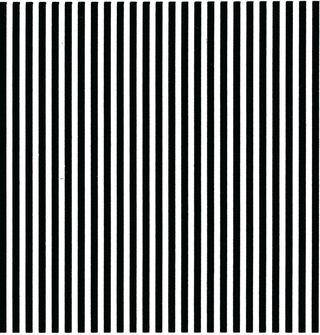ADHD
Out-of-Body Experiences: A Hyperactive Brain?
Part 9: Could hyperactivity in the temporoparietal junction cause OBEs?
Posted August 19, 2019
We now know that OBEs can be induced by stimulating the TPJ—the temporoparietal junction, typically on the right side (see explanation in my previous post). Although a fascinating discovery, it was not a complete surprise to find this spot near the temporal lobes. Indeed, the association between the temporal lobes and religious, mystical, and paranormal experiences has long been known.
For example, people with temporal lobe epilepsy more often report mystical experiences, are more responsive than others to religious words and symbols (Ramachandran 1998) and sometimes have OBEs associated with their seizures (Greyson et al 2014). Among people with traumatic brain injury, spirituality is also associated with decreased functioning of the right parietal lobe (Johnstone & Glass 2008).
This is not just relevant to people with brain injuries, though. Some of us have much more labile, or unstable, activity in our temporal lobes than others, and this lability is associated with having more paranormal, religious, and mystical experiences (Persinger & Makarec 1987). Such people are more likely to have OBEs, too (Braithwaite 2011).
This connection with the temporal lobe has been used as the basis for a neurobiological model of near-death experiences (Saavedra-Aguilar & Gómez-Jeria 1989), and Canadian neuroscientist Michael Persinger claims to be able to induce religious experiences by magnetically stimulating the temporal lobes (Persinger et al 2010).
Persinger refers to all “religious and mystical experiences as artifacts of temporal lobe function” (Persinger 1983). I was once lucky enough to be tested in his laboratory wearing his "God helmet" to stimulate my temporal lobes, and this was one of the most peculiar experiences I have ever had.
Left alone in a completely dark and soundproofed room, lying back in a comfy chair, my whole body began to feel odd and floaty. Then my legs seemed to grow longer and stretch out across the room. I felt unexpected and inexplicable emotions including intense fear. I did not have an OBE, but I certainly felt the kind of drifty feeling that can precede one (Blackmore 1994). All this was induced by interfering with temporal lobe function.
So, is there something different about the brains of people who have OBEs? Previous findings were based only on questionnaires, but British psychologist Jason Braithwaite tested a group of students with the pattern-glare test. This involves looking at striped patterns at different spacings (different spatial frequencies). Some people find stripes at an intermediate spacing (about 3 cycles per degree) upsetting. The stripes jiggle about, cause visual illusions and are uncomfortable to look at. He and his colleagues (2013) found that the OBErs in the group not only showed the usual correlations with temporal lobe signs but were also more susceptible to this pattern-glare. This test uses specific patterns that have to be viewed from the right distance, but the image here will give you an idea of whether you are susceptible or not.

Why should pattern glare be associated with having OBEs? Part of the answer is that people who have migraines and visual illusions are also more susceptible to pattern glare, and this is thought to be due to cortical hyperexcitability (Wilkins et al 1984). In other words, people who have OBEs might have a more excitable cortex in general. I was thrilled when I read about this. I have migraines, though happily they are not too serious and don’t usually last very long.
But when I look at certain patterns I can’t help seeing illusory colors and annoying movements, sometimes making me feel odd and unstable. This includes ordinary black and white text and even my shiny kitchen worktop which wiggles and flashes so that I need a large plain wooden chopping board and have to avoid looking at the worktop at all. And on trips to London, I have to avoid looking down at the steps of the escalators in the underground because the wriggly effects made me feel I might fall. Could a hyper-excitable brain be a clue to why I had that OBE? I believe it could, which is exciting for me personally.
But I have still not addressed that critical question about the “God spot” and the TPJ. Why should the TPJ be the specific location associated with OBEs? If God were involved, surely he could choose any part of the brain he liked for this purpose! If other worlds and other dimensions were involved, there is no obvious reason why any particular spot should be the ‘astral doorway’ or the gateway to worlds beyond.
The answer turns out to be simple yet enlightening. The TPJ is that area of the brain which constructs our body schema and acts as a hub for our sense of self. So when it is disturbed, so is our sense of where we are—whether that disturbance occurs naturally in an excitable brain or is induced by a magnetic field in a "God helmet." The research on this has huge implications not only for OBEs but for what we mean by self, and I will turn to this big question next time.
References
Blackmore,S.J. 1994d Alien abduction. New Scientist, 19 November, 29-31
Braithwaite, J. J., Broglia, E., Bagshaw, A. P., & Wilkins, A. J. 2013. Evidence for elevated cortical hyperexcitability and its association with out-of-body experiences in the non-clinical population: new findings from a pattern-glare task. Cortex, 49 (3), 793-805.
Greyson, B., Fountain, N. B., Derr, L. L., & Broshek, D. K. 2014. Out-of-body experiences associated with seizures. Frontiers in human neuroscience, 8.
Johnstone, B., & Glass, B. A. 2008. Support for a neuropsychological model of spirituality in persons with traumatic brain injury. Zygon, 43 (4), 861-874.
Persinger, M. A. 1983. Religious and mystical experiences as artifacts of temporal lobe function: a general hypothesis. Perceptual and motor skills, 57 (3f), 1255-1262
Persinger,M.A. and Makarec,K. 1987 Temporal lobe epileptic signs and correlative behaviors displayed by normal populations Journal of General Psychology 114 179-195
Persinger, M. A., Saroka, K., Koren, S. A., & St-Pierre, L. S. 2010. The electromagnetic induction of mystical and altered states within the laboratory. Journal of Consciousness Exploration & Research, 1 (7) . 808-830
Ramachandran, V. S. and Blakeslee, S. 1998. Phantoms in the brain: Probing the mysteries of the human mind, New York: William Morrow.
Saavedra-Aguilar, J. C., & Gómez-Jeria, J. S. 1989. A neurobiological model for near-death experiences. Journal of Near-Death Studies, 7 (4), 205-222.
Wilkins, A., Nimmo-Smith, I., Tait, A., McManus, C., Della Sala, S., Tilley,A….and Scott, S. 1984 A neurological basis for visual discomfort. Brain, 107 (4), 989-1017.




